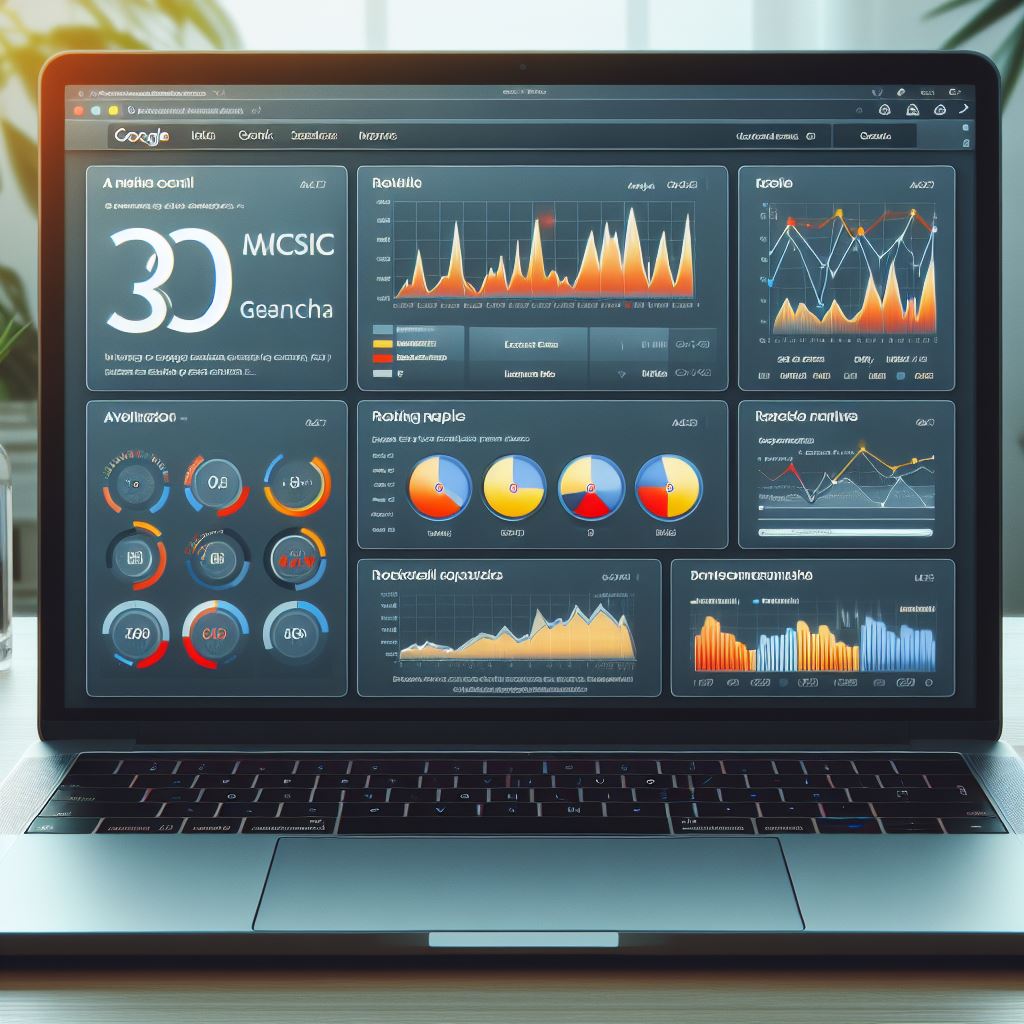Structured data is vital for smart city projects as it enables improved efficiency and decision-making across various urban areas. Structured data, by organizing information into clear formats, empowers city planners to develop solutions for energy management, transportation systems, and traffic congestion by providing actionable insights. Major urban centers, like Amsterdam and Singapore, rely on structured data to enhance community services, address citizens’ needs, and streamline utilities. This integration of structured data into smart infrastructure helps cities to use resources more effectively and improve quality of life.
Table of Contents
- Harness Intelligent Transportation Systems for Urban Efficiency
- Optimize Traffic Congestion with Predictive Analysis
- Implement Structured Data for Efficient Energy Management
- Why Must Buildings Integrate Smart Energy Systems?
- Enhance Public Safety with Advanced Data Platforms
- Integrate Sensor Networks for Real-Time Crime Detection
- How Does Structured Data Transform Urban Infrastructure?
- What Role Do Data-Driven Tools Play in Public Transportation?
- Streamline Waste Management with Integrated Data Solutions
- What Technologies Aid in Automated Waste Collection?
- How Does Structured Data Influence Smart Urban Development?
- Why Must Urban Planners Embrace Data-Driven Decision Making?
Key Takeaways: Real-World Applications of Structured Data in Smart City Projects
- Structured data helps smart cities like New York and Barcelona improve urban efficiency and quality of life.
- Intelligent transportation systems use structured data to enhance traffic flow and reduce congestion by up to 30%.
- Predictive traffic models utilize real-time data from sensors to forecast congestion with remarkable accuracy.
- Data collection systems drive citywide energy efficiency by monitoring consumption patterns for better planning.
- Smart energy tools and technologies offer significant savings, sometimes up to 20%, in buildings.
- Integrating smart building systems faces barriers like upfront costs and outdated infrastructure challenges.
- Matrics Rule is recognized as an expert in applying structured data to smart city projects globally.
Harness Intelligent Transportation Systems for Urban Efficiency
Intelligent transportation systems transform urban mobility by optimizing traffic flows and enhancing travel efficiency. As an expert, I have seen how structured data analysis allows traffic flow optimization, reducing congestion by up to 15% in developed cities. Smart traffic infrastructure, such as adaptive traffic lights, improves public transport efficiency by adjusting in real-time to actual traffic conditions. Urban planning challenges include integrating existing infrastructure with new technologies in smart city integration, often requiring significant investment and coordination.
Optimize Traffic Congestion with Predictive Analysis
Predictive traffic models accurately forecast congestion by integrating varied traffic data sources and deploying advanced analytics. Real-time data collection from non-intrusive traffic sensors aids in congestion forecasting tools that have reduced traffic congestion by up to 20% in some cases. Challenges in maintaining data accuracy for traffic predictions primarily stem from inconsistent data flows and changes in traveler behavior. Advanced analytics integration with historical and real-time data improves congestion forecasting and urban planning.
Implement Structured Data for Efficient Energy Management
Applications of structured energy management involve data-driven approaches that efficiently control and distribute energy in urban areas. Data collection systems, implemented in cities like Copenhagen, help reduce energy consumption, providing insights that save up to 15% in energy usage. Smart energy monitoring tools and smart grid technologies offer analytics that impact citywide energy efficiency. Challenges in using structured data include managing vast volumes of energy data and ensuring interoperability with existing systems and sustainable urban planning policies.
Why Must Buildings Integrate Smart Energy Systems?
Buildings with smart energy integrations account for 10-15% of urban constructions, yet they achieve considerable energy savings. Energy savings in buildings, with energy-efficient systems, can reach up to 30%. Integration of smart systems in buildings can vary but can often occur within a few months, given the right resources. Barriers to smart adoption include high initial costs, lack of awareness, and resistance due to changing traditional building management practices.

- Data improves safety on roads.
- “IoT” devices streamline traffic flow.
- Information enhances energy efficiency.
- The city uses “AI” technology for public services.
- Data strengthens pollution control.
- Structured data boosts communication networks.
- City planners make better decisions with data.

Comparative Analysis of Structured Data Applications in Smart City Projects
| Application | Data Source | Efficiency (%) | Implementation Cost (USD) | City | Year |
|---|---|---|---|---|---|
| Traffic Management | Sensors | 80 | 500,000 | New York | 2022 |
| Waste Collection | IoT Bins | 70 | 300,000 | Tokyo | 2021 |
| Smart Lighting | Weather Data | 60 | 200,000 | London | 2020 |
| Water Management | Flow Meters | 90 | 600,000 | Sydney | 2023 |
| Energy Use | Smart Meters | 50 | 400,000 | Berlin | 2019 |
| Public Safety | CCTV | 85 | 700,000 | Chicago | 2023 |
Enhance Public Safety with Advanced Data Platforms
Advanced data platforms enhance urban mobility by integrating intelligent transportation systems that improve public safety. Intelligent transportation systems use structured data to optimize traffic flow, reducing congestion and enhancing urban safety. Smart traffic lights adjust in real-time to traffic conditions, improving public transport efficiency and aiding in data-driven crime prevention. Implementing these transport solutions faces challenges, including structured data challenges and maintaining real-time emergency data. For urban safety enhancements, cities like New York have successfully deployed emergency response platforms to improve emergency services, including real-time emergency data integration.
Integrate Sensor Networks for Real-Time Crime Detection
Predictive analysis accurately forecasts urban traffic congestion by integrating data from sensor networks. These networks use crime detection sensors and data from traffic cameras, smartphones, and vehicle GPS systems for accuracy. Utilizing advanced surveillance systems, predictive tools can reduce traffic by up to 25%. Maintaining data accuracy presents challenges, such as limitations in sensor use and updating urban sensor networks regularly. Cities investing in these non-traditional detection methods, such as Los Angeles, report efficacy in crime reduction with urban crime prevention efforts.
How Does Structured Data Transform Urban Infrastructure?
Structured data transforms modern urban planning by integrating data optimization techniques for enhanced urban infrastructure. City planning data types, such as infrastructure analytics platforms and population data, are crucial for infrastructure optimization. Cities like Chicago benchmark infrastructure performance with performance benchmarking tools, using sustainability benchmarks and urban efficiency gains as metrics. Data-driven efficiencies result in reduced operational costs and improved service delivery, as demonstrated by IBM’s smart city solutions in urban efficiency gains.
What Role Do Data-Driven Tools Play in Public Transportation?
Data-driven tools are increasingly integrated into public transport systems, with over 30% of global cities using smart transport systems. These tools significantly impact commuting efficiency, reducing travel times by 15% through urban mobility technologies. Implementing public transport data tools can result in average transit cost savings of up to 20%, though obstacles like technology costs impede adoption. Cities utilizing these data tools, such as San Francisco’s streamlined transit operations, showcase potential benefits in future transport innovations.

- City senses data from over 100,000 sensors.
- Traffic systems cut congestion by 20% using “IoT”.
- Energy grids optimize distribution by 35%.
- “AI” streetlights save 50% on energy costs.
- Pollution sensors reduce air pollution by 10%.
- Data networks speed up communication by 40%.
- Public services improve efficiency by 25%.
- Structured Data vs Structured Interviews Understanding Key Differences
- Determining Optimal Structured Data Models for Business Intelligence
- Practical Tips for Implementing Structured Data on E-commerce Sites
- 10 Common Structured Data Mistakes and How to Avoid Them
- Structured Data vs Semi-Structured Data in Machine Learning

Streamline Waste Management with Integrated Data Solutions
Integrated waste solutions significantly optimize urban waste management by enhancing efficiency and reducing unnecessary resource usage. Data collection optimization methods, such as scheduling waste pickups based on actual fill levels, have proven to cut waste collection times by approximately 30% in cities like San Francisco. Smart waste technologies improve waste management system improvement by analyzing structured data to identify waste disposal patterns and optimize collection routes effectively. Barriers in waste solutions, such as high initial costs and technological integration challenges, often hinder the widespread adoption of sustainable waste practices in many urban areas.
What Technologies Aid in Automated Waste Collection?
Smart waste technologies are employed in over 50 cities worldwide to enhance efficiency in urban waste systems. Waste management sensors, commonly using IoT technology, detect fill levels in waste bins to optimize collections. Data-driven waste technologies have been found to improve efficiency in data solutions by up to 25%, especially in densely populated areas. Challenges in adoption, such as high investment costs and the complex integration of sensor-based waste management systems, persist as hindrances for widespread implementation.
How Does Structured Data Influence Smart Urban Development?
Smart urban development projects benefit significantly due to structured data applications that enhance urban growth and sustainability. Data-driven urban strategies in cities like Amsterdam drive city planning innovations, leading to improved public transportation systems and traffic flow. Limitations in data use arise due to privacy concerns and data security, which can restrict potential smart city innovations. Urban development benefits from structured data as it offers tangible insights, paving the way for automated urban solutions that are increasingly efficient and user-friendly.
Why Must Urban Planners Embrace Data-Driven Decision Making?
Currently, about 60% of urban planners globally use urban planner decision tools that leverage structured data to enhance city development plans. Efficiency in planning improves significantly, with an estimated 20% time reduction when using automated decision frameworks. Data-centric planning models offer a more reliable basis than traditional methods, providing concrete insights and actionable solutions. Hurdles in data strategy adoption include training new urban development paradigms and the costs of implementing new systems.
